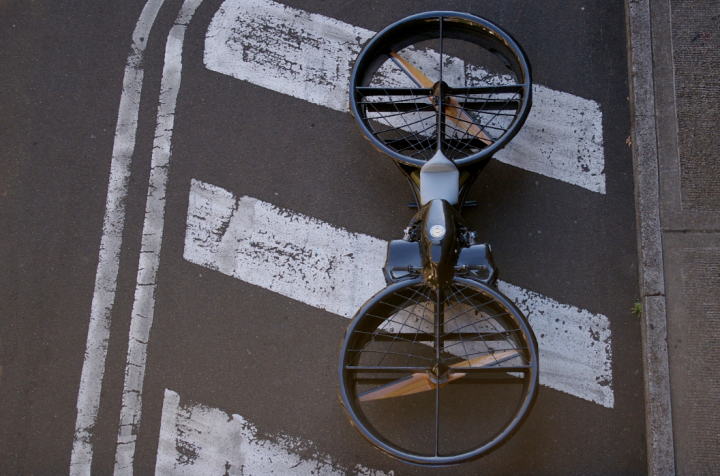
Part motorcycle, part helicopter, Malloy’s Hoverbike packs a 1170cc 4-stroke engine that delivers more than 650-pounds of upward thrust via two ducted propellers in the front and back of the seating area. While he’s yet to actually fly the thing around — a minor detail that we should all overlook as to not drain our excitement — Malloy estimates that the Hoverbike is capable of achieving trouser-soiling altitudes of 10,000 feet or more, and reaching speeds of 150 knots, or about 173 MPH.
Built with a carbon fiber frame, the Hoverbike has a dry weight of about 231 pounds — less than most motorcycles. That’s especially impressive considering the thing is pretty big — just short of 10 feet long and more than 4 feet wide.

While a Hoverbike might sound too good to be true, Malloy seems to have the necessary credentials to be a successful hobby awesomeness-maker. GizMag reports that Malloy “works in the mechanical design of airborne and ground based hyperspectral sensors at an optical engineering company in Australia.” He is also an avid helicopter pilot.
The Hoverbike is controlled entirely using the handlebars, which are outfitted with a variety of controls, including thrust and all the various steering options. The Hoverbike website describes the high-flying vehicle as “very safe,” but stipulates that passengers may need to wear a parachute to avoid certain death.
One added bonus for anyone in the US who plans to purchase a Hoverbike once it’s available: Malloy guesses that the aircraft would be classified in as an “ultralight” by the FAA, which means no pilot’s license would be necessary for legal fight.
So, what would one use the Hoverbike for, you ask? According to Malloy, good Hoverbike activities include “aerial cattle mustering,” “search and rescue,” “power line inspection” and aerial surveying. “Getting chicks” is conspicuously absent from the list, though we suspect this would be its primary use.
(P.S. Malloy has funded the Hoverbike almost entirely himself. So if you want to see this dream vehicle become a reality, feel free to donate here.)


